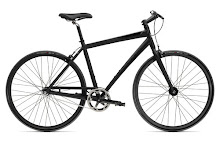The Microevolution of Wal-Mart
When Charles Darwin returned to England following his stint on the Galapagos Islands, he brought with him new ideas on how animal species evolved. And while he remained a creationist for some time before his major paradigm shift to evolution, he had no clue that the things he was thinking would someday be applied to everything from social organization (think Nazi Germany) to retailing.
And to make this point, we need only look at Wal-Mart to observe how it is "naturally selecting" itself so that it can better survive into the future.
Starting with but one store in the early-1960s in Arkansas, the Wal-Mart empire has grown around the world. It has become to American retailing what Google is to web search. With 3000+ stores in various formats around the US (supercenters, neighbrohood groceries, discount stores, and warehouse clubs), Wal-Mart is the biggest retailer in the world.
But it cannot afford to rest on its laurels. Pesky competitors like Target and Kohl's are chiseling away at categories, and developing their own niches. And Best Buy, the biggest electronics retailer in the US, looks mighty attractive and could easily have some of its customers siphoned off.
And so Wal-Mart finds itself today in an interesting position. It wants to appeal to a higher class of customer than its core lower-middle class patrons. And it also needs to find a way to sidestep critics, liberal politicians, and municipalities bent on keeping Wal-Mart outside their city limits.
This presents an interesting strategy dilemma, but if Wal-Mart wants to maintain, not to mention grow, they must find ways around these potholes in the road. They must continue to evolve...from small-town discount store initially to supercenter, and now to everyman's store, be it uptown, downtown, or out of town.
Wal-Mart has drawn the ire of many, starting with labor groups who protest wage scales and benefit packages. Others protest the very size of Wal-Mart, thinking that if they can keep WM out of their town, they can preserve old-economy mom-and-pop stores (and a few jobs).
Chicago, for example, is trying to impose a $10 minimum wage on any "big box" retailer wanting to set up shop; this move prompted WM to move a planned new store to a nearby suburb (which welcomed them with open arms).
Still, WM knows that this threat will not go away. So they are launching an ad campaign that demonstrates their community giving and involvement, and the fact that they have just absorbed the cost of health insurance for 150,000 workers.
But WM needs to do more than just make these critics happy. Its stock price has plummeted by one-third since 2002, mostly because the firm was unable to maintain its double-digit sales growth record. You can only penetrate that core market so far, and WM was nearing the end of its potential.
The result? WM has decided to go upscale, which is a precarious balancing act. They want to simultaneously attract well-heeled customers with expensive plasma TVs, jewelry, and trendy organic groceries, while at the same time not alienating their core on-a-budget customer group (read the article here).
Interior decor of nearly all Wal-Marts has been undertaken in the last two years to try to give off a better image, including faux wood floors in clothing departments, and better merchandising of garments. Still, one of the biggest hurdles for Wal-Mart will be in convincing these upper-class customers that it's OK to buy stylish clothing and expensive electronics along with the groceries and staple items they may already be buying there. This can be an uphill battle.
I wonder if Darwin would shop there?
Dr "Always Looking For A Bargain" Gerlich

